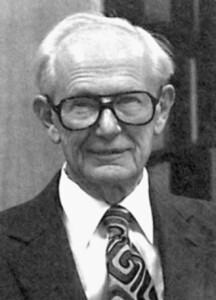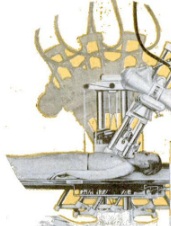As explained below, there are three things to remember about ranked voting:
- Vote for as many candidates as you have choices, as long as some of them are less objectionable than others.
- All other things being equal, vote for the less popular candidate before you vote for the more popular candidate.
- Never vote for the same person more than once.
Both Minneapolis and St. Paul will be using “ranked voting” in the mayoral election this year. There is no primary election, and in St. Paul, there are 10 candidates running in the general election. You are allowed to vote for your top six choices. In other words, there are six different elections you can vote for. Minneapolis has similar numbers. You will vote for your first choice, and that is one election. Then, you will vote for your second choice, and that appears on the ballot as an entirely different race. This continues through your sixth choice. You can make any number of choices, between zero and six. Minneapolis has a similar number of candidates and choices.
As an election judge, I am allowed to explain the basic mechanics of voting, but I am limited in what I am allowed to explain. In particular, I am not allowed to explain to voters anything that might be perceived as “strategy” in using your six votes. So as a citizen, let me explain a bit about strategy.
A winner will generally not be selected unless that person has a majority (defined as 50% plus one vote). At first, the votes will be counted as usual. On election night, you will see the name of the candidate who won the most votes as first choice. If that person has a majority (50% plus one vote), then that candidate will be the winner. But it is extremely unlikely this will happen. Chances are, none of the candidates will receive more than 50%. Therefore, vote counting will continue on Thursday morning.
On Thursday morning, the second round will begin. One candidate (the one receiving the least votes) will be eliminated. If you voted for anyone else, then your vote will not change. Your first choice will remain your vote.
Election judges (which will include me) will then remove the ballots of the people who voted for the eliminated candidate. We will look at the second choice, but only on those ballots. Then, we will place those ballots in with the original ballots for that candidate.
We will then count the ballots a second time. If someone now has a majority, then that candidate will win. If no candidate has a majority (which is still extremely likely), then the counting will move to the thrid round. Again, one candidate will be eliminated. All of that candidate’s votes (which might have been the voter’s first or second choice) will be removed. We will then look at the next choice on those ballots (which might be the second choice or third choice), and add those ballots to the count for that candidate.
This process will continue, probably several times, until some candidate has a majority. It is likely that the winner will not be known until Saturday, after several rounds of counting have been done.
We can argue all day about whether this is a good system or a bad system. But that doesn’t matter. If you live in Minneapolis or St. Paul, this is the system you need to deal with. And if you want the maximum impact from your vote, then you need to think about strategy.
First of all, if you believe that some of the candidates are worse than other candidates, then you should take advantage of your ranked voting to make sure that the person you do not like is defeated. In other words, if there are evil candidates and lesser evil candidates, then it is in your best interest to vote for the lesser evils at some point in the voting.
If you vote for only one candidate, then there is a 9/10 chance that your candidate will be eliminated. Once your preferred candidate is eliminated, then only your other ranked choices will prevent the worst candidate from being elected.
In other words, if you learn on Saturday that candidate X, whom you hate, has been elected, and that even candidate Y would have been better, then it’s your fault if you failed to vote for candidate Y. Your failure to vote for candidate Y, even though you had the opportunity, meant that the even worse candidate, X, was elected.
Therefore, if, in your opinion, six candidates are better than the other four, then you should vote for all six of those candidates. If you fail to do so, then you are responsible for one of those four bad candidates winning. Please do not blame others if one of those four wins, because by not voting all of your choices, you are responsible. So at the very least, you need to look at all ten candidates and decide which four you want the least. Then, vote for the other six, in your order of preference, even if you have to hold your nose to vote for some of them.
If there is more than one candidate whom you prefer approximately the same amount, then there is another consideration. One candidate will be eliminated after the first round. If you vote for that candidate as your second choice, then your vote will not count.
This is important to remember, because there might be some candidate you really like, but you do not believe that candidate has a very good chance of winning. If that is the case, then you should vote for that candidate as one of your first choices, rather than as one of your last choices.
Let’s say, for example, that you like candidate A, but you don’t think he or she has a very good chance of winning. You like candidate B about as well, but you think they have a better chance of winning.
In this case, your best strategy is to vote for candidate A as your first choice, and candidate B as your second choice. TO see why, let’s look at how your one vote could make a difference.
Let’s say that in the first round, you vote for candidate A. Candidate B, who you also like, failed to get a majority by a single vote. If you had voted for B, then B would have won. Your vote cost that candidate the election–but only in the first round.
But no matter how many rounds the election goes, that candidate will eventually win, because you voted for them. Eventually, your other candidates will be eliminated. And eventually, your one vote will be cast in favor of candidate B. Since candidate B lost the first round by only one vote–your vote, it turns out–it is impossible for any other candidate to win. Since your guy is only one vote short of a majority, it is impossible for any other candidate to get 50% plus one vote. The best they can possibly get is 50% minus one vote, which is not enough to win the election.
However, if you voted for B because you thought B was more likely to win, then this can be a self-fulfilling prophecy. If A does not get enough votes in the first round, then A will be eliminated. Your vote for A as second choice will not count, because A has already been eliminated.
Therefore, all other things being equal, it is to your benefit to vote for the less popular candidates as your first choices. If they are truly unpopular, then they will be eliminated, but you will still get to vote for the more popular candidate in the next round. And even though you ranked them lower, you will still cast the deciding vote for them.
In summary, if you want to be a responsible voter, then you should vote for six candidates, even if your sixth choice is deeply flawed, as long as choices 7 through 10 are more flawed. If a candidate you do not want wins the election, then you have no valid reason to complain, because you could have voted against that person but chose not to do so.
And if you want to vote in the most strategically beneficial way, then you should vote for less popular candidates as a higher rank than more popular candidates.
Finally, it should be noted that there is absolutely no benefit to voting for the same candidate as more than one choice. For example, assume you vote for C as both your first choice and your second choice. As long as C is still in the running, then your vote will be counted for C, no matter how many rounds the counting goes. Nobody will ever look at who your second choice was.
But if C is eliminated at some point, then the judges will look at your second choice. If C is your second choice, then this vote will not count, because C has already been eliminated. Therefore, there is no rational reason for voting for the same candidate more than once. Your second vote will not help them, and you have deprived yourself of the opportunity to vote for another candidate.
In summary, here is how you should rationally cast your ballot:
- Vote for as many candidates as you have choices, as long as some of them are less objectionalbe than others.
- All other things being equal, vote for the less popular candidate before you vote for the more popular candidate.
- Never vote for the same person more than once.
All of the foregoing advice is non-partisan, and is equally applicable whether you are on the left or right. To view my personal endorsements in the St. Paul election, please see my earlier post.
This post was prepared and paid for by Richard P. Clem, who is solely responsible for its content, and is not authorized by any candidate or candidate’s committee.
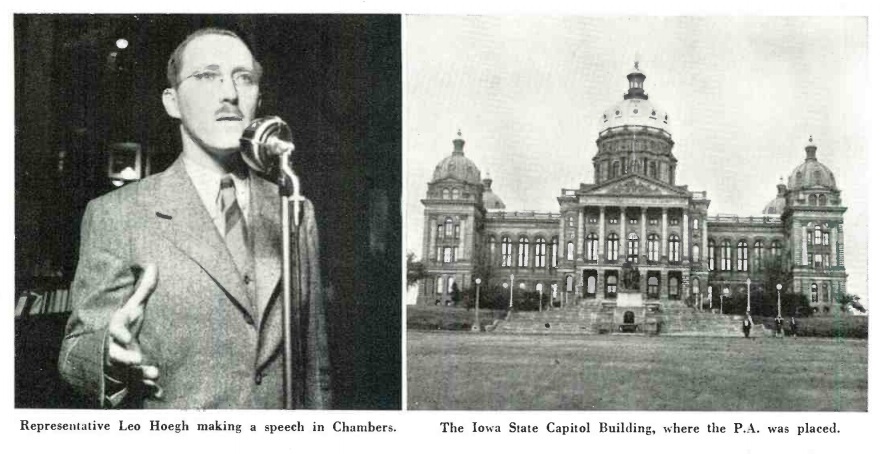 For the first 93 years of statehood, the Iowa Legislature managed to carry on the people’s business without resort to electronic sound amplification. Back then, politicians presumably understood that to be successful, they needed to learn how to project their voice. But in 1939, they decided to solicit bids for an audio amplifier for the House chambers. The low bidder was Lloyd Moore of Moore’s Radio Shop, Chariton, Iowa, and he recounted his experiences with the project in the October 1939 issue of Radio News.
For the first 93 years of statehood, the Iowa Legislature managed to carry on the people’s business without resort to electronic sound amplification. Back then, politicians presumably understood that to be successful, they needed to learn how to project their voice. But in 1939, they decided to solicit bids for an audio amplifier for the House chambers. The low bidder was Lloyd Moore of Moore’s Radio Shop, Chariton, Iowa, and he recounted his experiences with the project in the October 1939 issue of Radio News.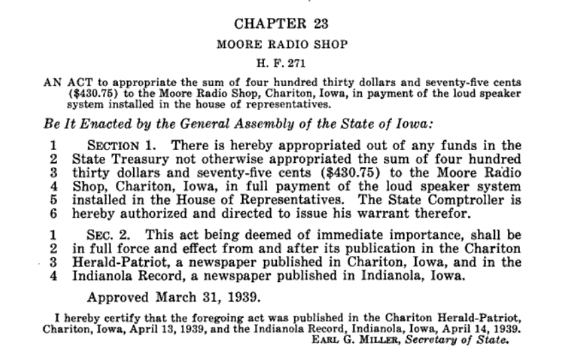
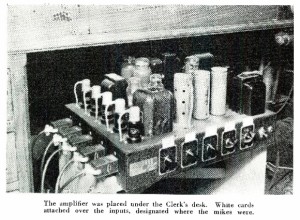 The amplifier was over engineered. The power transformer was three times as large as necessary. Four stages of amplification were used. Gain was not excessive, so as to avoid any problems with microphonics. Five inputs were used, each switchable from the main console. One mike was mounted at the Speaker’s desk and one at the clerk’s. Three additional microphones were located in front of the floor, with cords long enough to extend to any speaker’s desk. Future plans called for additional microphones throughout the chamber, with a switch box used in place of the three existing mikes.
The amplifier was over engineered. The power transformer was three times as large as necessary. Four stages of amplification were used. Gain was not excessive, so as to avoid any problems with microphonics. Five inputs were used, each switchable from the main console. One mike was mounted at the Speaker’s desk and one at the clerk’s. Three additional microphones were located in front of the floor, with cords long enough to extend to any speaker’s desk. Future plans called for additional microphones throughout the chamber, with a switch box used in place of the three existing mikes.

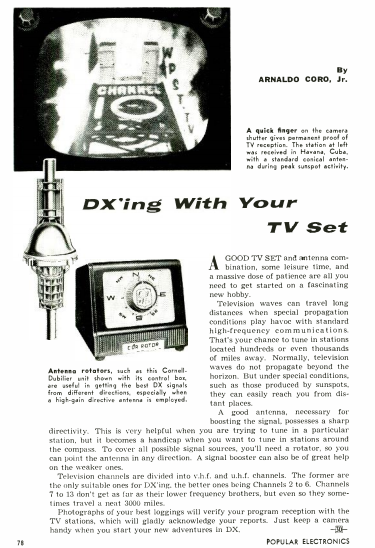
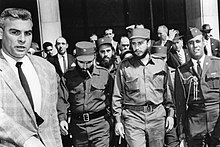
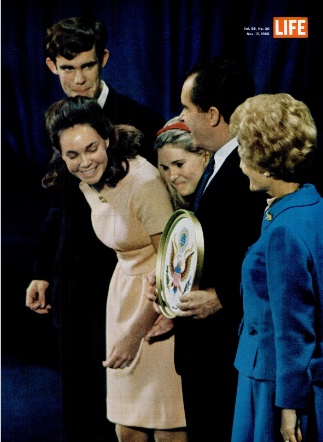

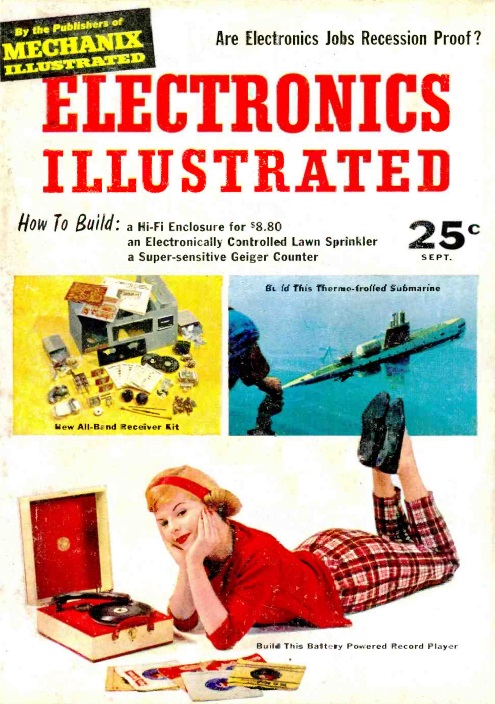
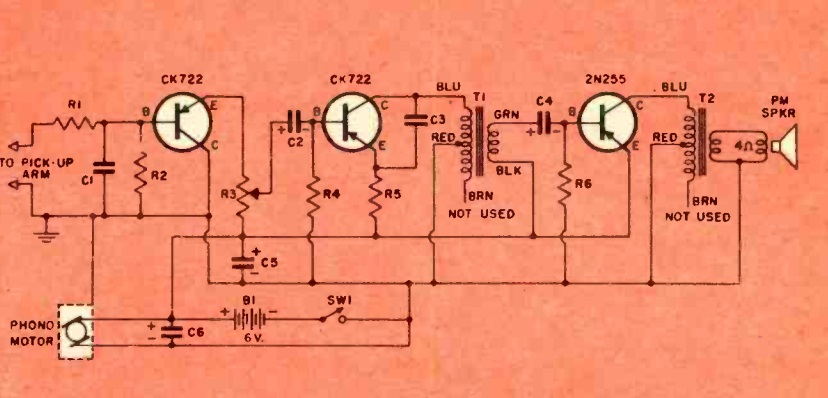

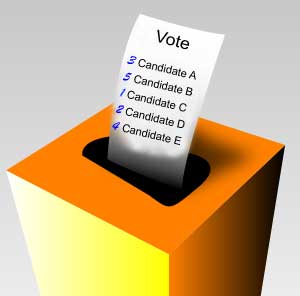

 Of the remaining candidates, we believe that
Of the remaining candidates, we believe that 




